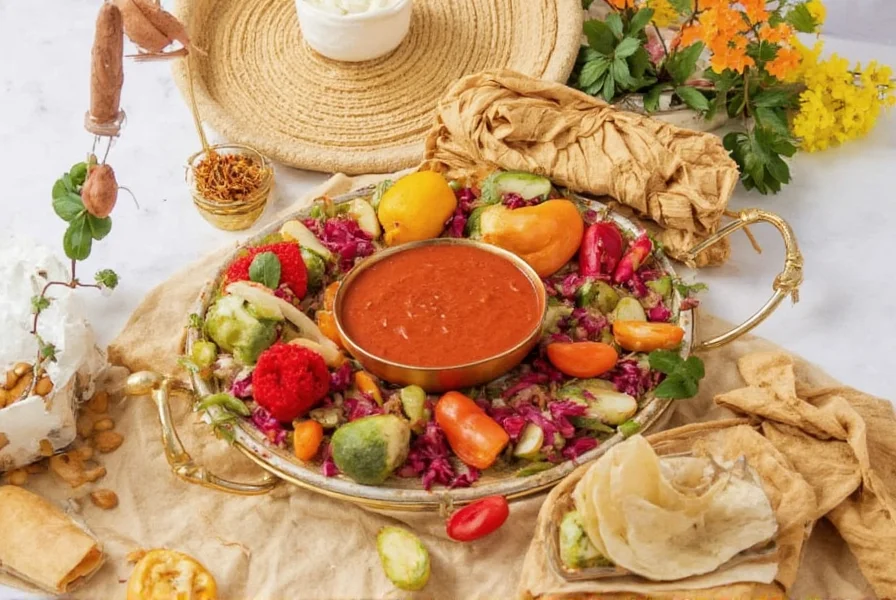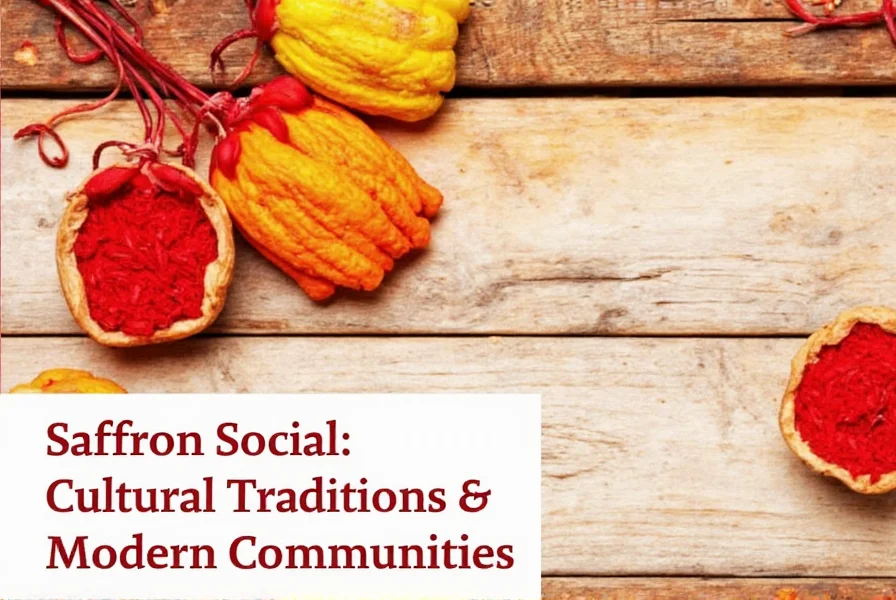Saffron isn't just a spice; it's a thread connecting humanity through centuries of shared traditions. When people search for saffron social, they're typically exploring how this precious crocus-derived spice functions within cultural rituals, community gatherings, and modern digital networks. Unlike commercial platforms, saffron social represents organic connections formed around appreciation for this golden spice—from Persian wedding ceremonies to Spanish paella gatherings and Instagram communities tracking sustainable harvesting practices.
The Cultural Fabric of Saffron Traditions
For over 3,500 years, saffron has woven itself into the social fabric of civilizations across three continents. Ancient Persians used it in royal coronation ceremonies, embedding threads in fabrics to symbolize joy and prosperity. In Kashmir, the kong posh ritual involves sprinkling saffron-infused water during weddings—a practice still observed today. Mediterranean cultures incorporate saffron into communal bread baking, where the spice's aroma signals celebration and unity.
These traditions demonstrate saffron's role as a cultural connector across generations. The spice's labor-intensive harvesting—requiring 75,000 flowers for just one pound—creates natural community involvement. In Iran's Khorasan province, families gather at dawn during harvest season, turning collection into a social event with music and shared meals. This communal aspect defines authentic saffron social practices long before digital platforms existed.

Modern Saffron Social Networks
Today's digital landscape has expanded saffron social into global knowledge-sharing ecosystems. Dedicated subreddits like r/SaffronCooks host 15,000+ members exchanging heirloom recipes. Instagram hashtags like #SaffronCommunity showcase sustainable farming techniques from Spanish growers to Indian producers. These platforms maintain the spice's social essence while addressing modern concerns:
| Platform Type | Primary Focus | Community Size |
|---|---|---|
| Specialized Forums | Cultivation techniques & authentication | 5,000-20,000 members |
| Social Media Groups | Recipe sharing & cultural education | 10,000-50,000 members |
| Research Collaboratives | Sustainable harvesting innovations | 200-500 experts |
These communities address critical needs like combating saffron fraud (where 60% of market product is adulterated) through collective knowledge. The saffron appreciation social networks have become vital for preserving traditional knowledge while adapting to contemporary challenges like climate change affecting harvests.
Building Authentic Saffron Connections
Meaningful engagement with saffron social requires understanding its dual nature: respecting historical context while participating in modern discourse. Food historians note that authentic saffron social experiences share three characteristics:
- Knowledge reciprocity – Members freely share cultivation insights without commercial pressure
- Cultural preservation focus – Documenting traditional uses before they disappear
- Quality verification systems – Community-developed methods to identify genuine saffron
When exploring saffron spice social media communities, look for groups emphasizing these elements rather than pure commercial promotion. The most valuable networks often operate through private Facebook groups or niche platforms like SaffronCircle.org, where members verify each other's expertise through shared experiences rather than follower counts.

Preserving Saffron's Social Legacy
As industrial agriculture threatens traditional saffron-growing regions, these social connections become preservation tools. UNESCO's Intangible Cultural Heritage program now documents saffron-related practices in Greece, India, and Iran. Digital archives created by saffron cultural heritage communities capture oral histories from aging harvesters, ensuring knowledge transfer to new generations.
For those seeking authentic engagement, consider these actionable steps:
- Join regional saffron festivals like Spain's La Mancha Harvest Celebration
- Participate in verified online workshops through university extension programs
- Support cooperatives maintaining traditional harvesting methods
The true essence of saffron social lies not in digital metrics but in the golden threads connecting people through shared appreciation of this remarkable spice. Whether through ancient ceremonial uses or modern knowledge exchanges, these connections preserve both cultural heritage and agricultural biodiversity.
Frequently Asked Questions
What does saffron social actually refer to?
Saffron social describes both historical cultural practices involving saffron and modern online communities centered around this spice. It includes traditional ceremonies where saffron plays symbolic roles, as well as digital networks where enthusiasts share cultivation techniques, recipes, and cultural preservation efforts—not a specific commercial platform.
How can I find authentic saffron communities online?
Look for communities emphasizing knowledge sharing over sales, with verification systems for genuine saffron information. University-affiliated forums, regional cultural associations' social media groups, and platforms like SaffronCircle.org provide authentic connections. Avoid groups where members primarily promote commercial products without educational content.
Why is saffron considered socially significant in multiple cultures?
Saffron's labor-intensive harvesting (75,000 flowers per pound) naturally creates community involvement. Its use in weddings, religious ceremonies, and communal meals across Persian, Mediterranean, and South Asian cultures established it as a symbol of unity and celebration. This historical social function continues in modern community gatherings centered around saffron cultivation and culinary traditions.
How do saffron social communities combat fraud in the spice market?
Authentic saffron communities develop collective verification methods including microscopic analysis tutorials, regional origin tracking, and chemical testing protocols. Members share documentation of harvesting processes and maintain databases of legitimate producers. These grassroots efforts help identify adulterated products, addressing the industry problem where approximately 60% of commercial saffron contains fillers.











 浙公网安备
33010002000092号
浙公网安备
33010002000092号 浙B2-20120091-4
浙B2-20120091-4